Castle in the Clouds
| Travel Reports by Chashitsu | view profile of Chashitsu |
| previous post |
| next post |
| Note: The opinions and views expressed in this user report are those of the individual author and do not necessarily reflect the opinions and views of japan-guide.com. |
April 22, 2016 - Castle in the Clouds
The castle at Takahashi had come to my attention with a dramatic picture of a mountain top castle in the clouds found browsing the internet. Whilst staying in Okayama I took the local train to Bitchu Takahashi to see the castle, samurai houses and temples. Takahashi is a small city built at the foot of the castle beside the Takahashigawa river. The castle sits on top of Mt Gagyu and is the highest original mountain top castle in Japan at 480m ? a climb not for the faint of heart. It consists of a three story white walled keep, entrance gate and a couple of yagura (guard towers). Itüfs 10m high stone walls are a testament to medieval engineering. I suspect the canny builders would cut the walls into the topology of the mountain top to give a sloping dry stone wall with spoil and rubble backing. Nevertheless such feats are pretty incredible with just manpower and simple tools. The pictures show the entrance and main keep together with the view of Takahashi far below.
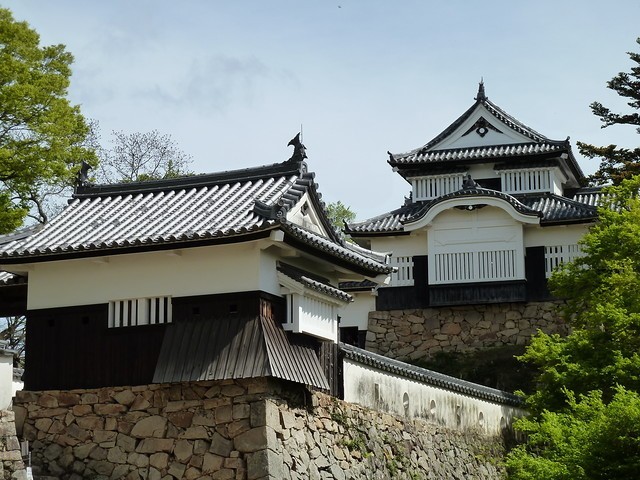
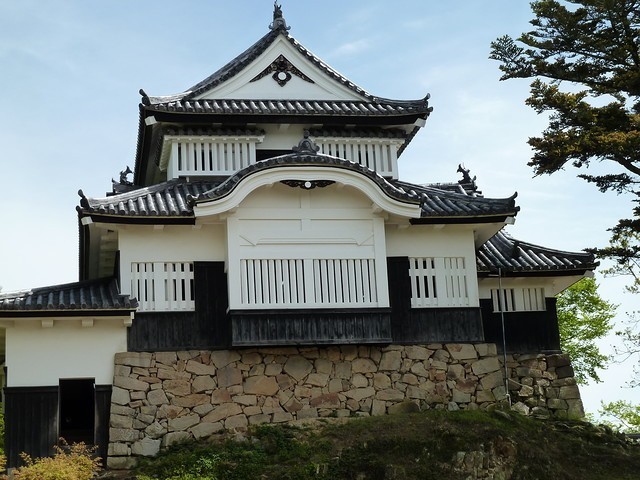
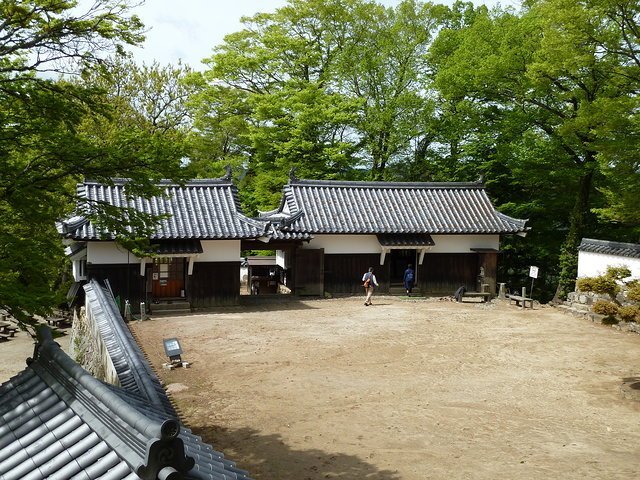
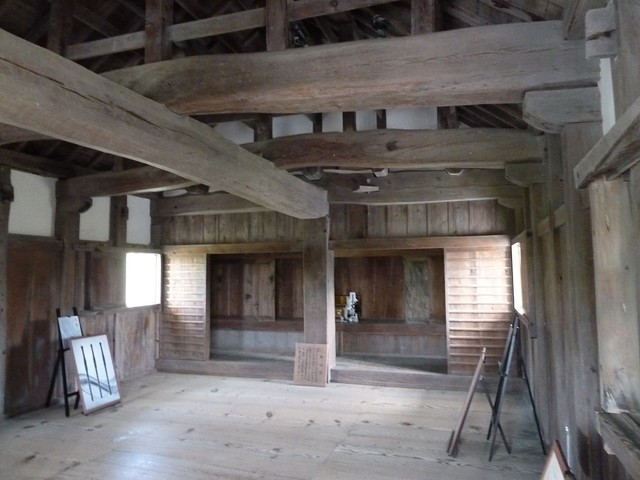
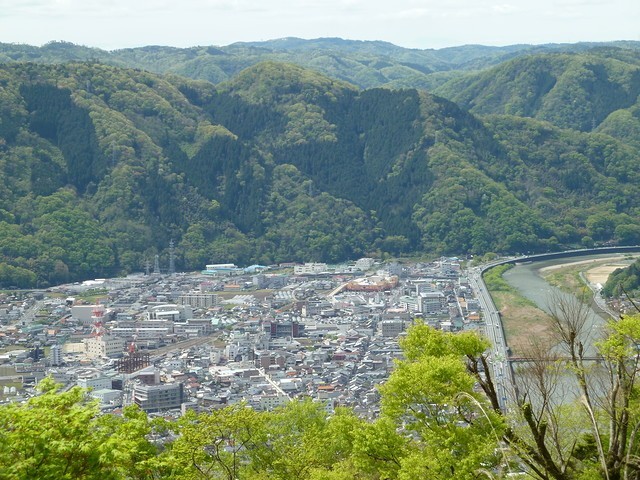
Walking the 1.5km back into town I passed through Ishibiya-cho, an earthen wall lined street with a few Edo period samurai houses and duly visited the Orii and Haibara residences. The houses have traditional style roofed entrances with shoin style main house beyond. The Orii house is established as a warrior house museum with small front garden and tea ceremony room. The Haibara house was that of a higher ranking samurai with roof built in the Irimoya style (all round hip and gable), a 12 mat main room with many interesting architectural features including a lovely bell shaped window and elements of sukiya style.
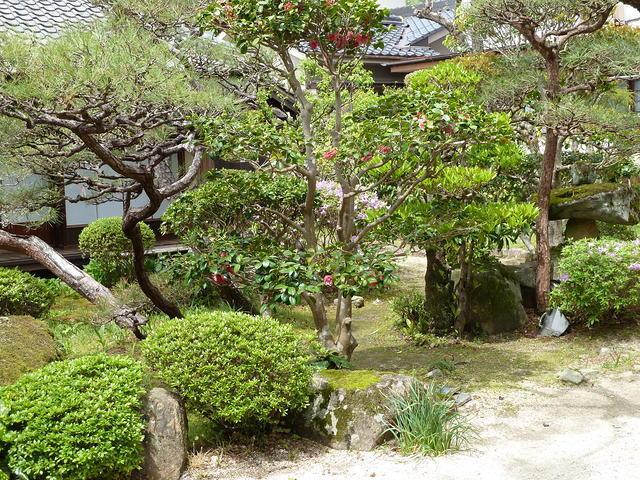
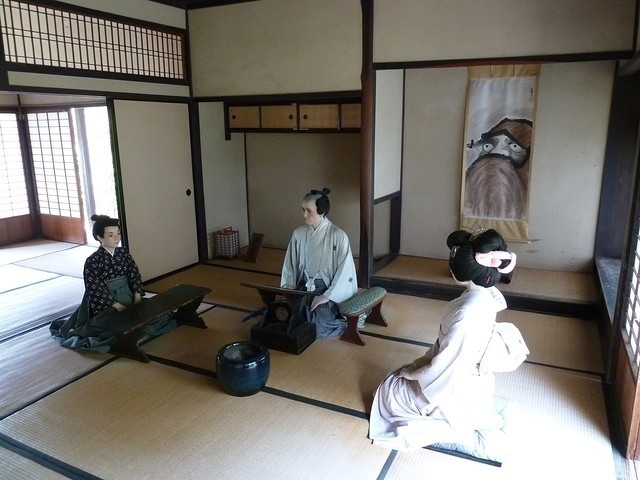
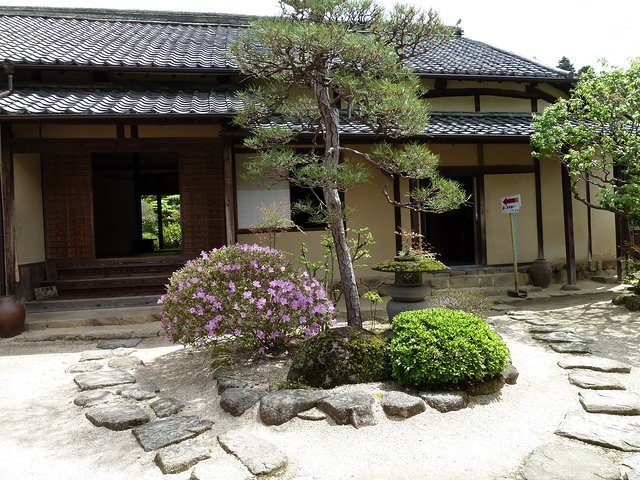
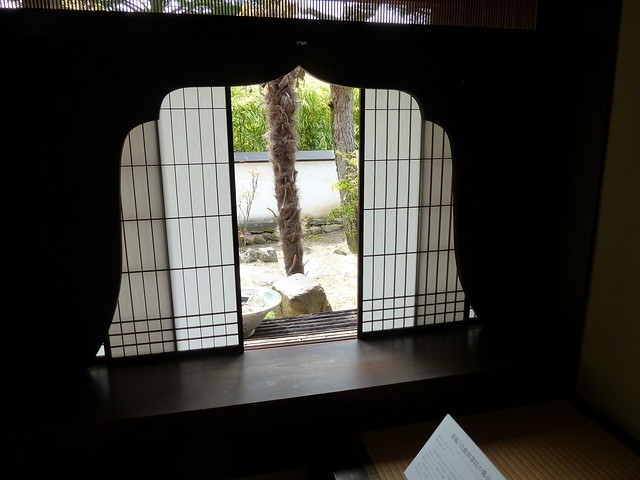
A little further down the road was the fabulous Raiku-ji temple with itüfs delightful dry landscape garden. The temple dates from medieval times and the garden was designed and built by Kobori Enshu, who was governor of the province and lived in the temple, rather than the castle. The garden is known as a ügHoraiüh style meaning spiritual peace and harmony to those viewing it. I guess that this would be his vision of paradise. The two low hills of rocks rise up like islands in the gravel representing the crane and turtle with mounds of Satsuki azaleas suggesting the undulating waves of the sea. The garden remains much as it was when originally built in 1604.
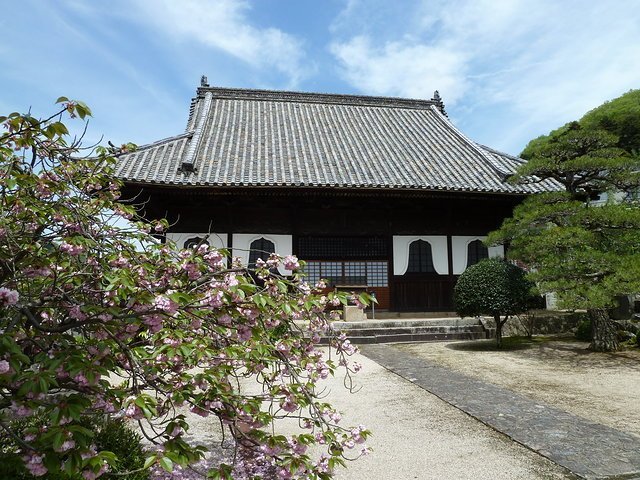
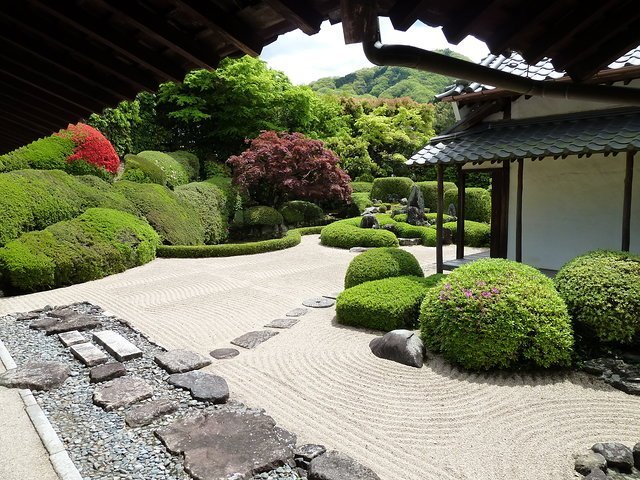

Before returning to the station I visited the temples of Yakusin and Shoren-ji in the hills behind the station.
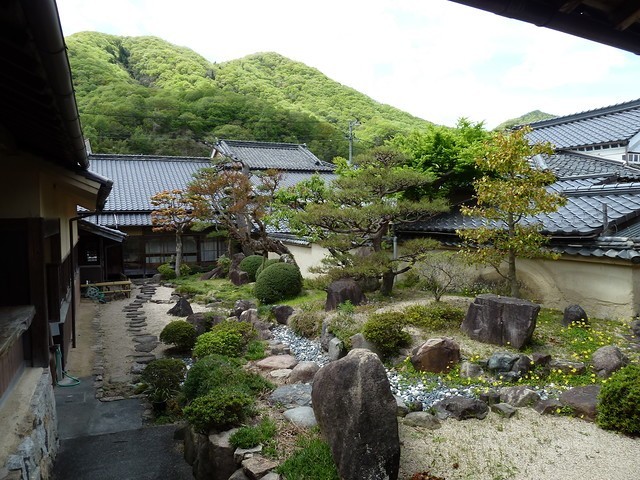

| previous post |
| next post |
|
List of Posts:
2017/07/25 - Japan's tectonic landscape reflected in the gardens 2017/07/15 - Flora of Japan 2016/04/27 - Time in Asakusa 2016/04/25 - Kakunodate 2016/04/23 - A Thousand Cranes 2016/04/22 - Castle in the Clouds 2016/04/21 - The beauty of Koraku-en 2016/04/20 - Far from the Madding Kyoto Crowds - Part 1 2016/04/20 - Far from the Madding Kyoto Crowds - Part 2 2016/04/18 - A Day in the Mountains 2016/04/17 - Delights of Hikone 2016/04/16 - Nara Revisited 2015/01/03 - Kamakura temples and gardens 2015/01/01 - Takayama Temple Trail 2014/12/29 - Kurama - Kibune hiking trail 2014/11/10 - A visit to Himeji 2014/11/05 - Shigemori Mirei - The Rebel in the Garden 2014/11/04 - Arashiyama and nearby sights 2014/11/03 - The less visited sites of Nara 2014/11/03 - The gems of Matsue 2014/10/31 - Agon-shu Monastery 2014/10/30 - In the footsteps of the Shogun 2014/10/30 - Tale of the Genji |
